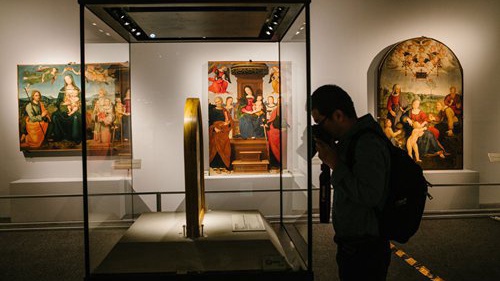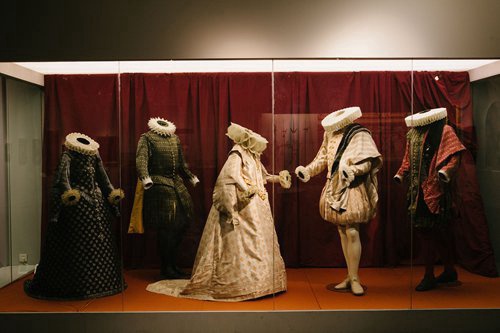

The Art, Culture and Daily Life in Renaissance Italy exhibition, which kicked off on Tuesday, showcases a collection of 102 exhibits selected from 17 Italian museums and institutions, with a majority showing overseas for the first time. Visitors will have the opportunity to view masterpieces from well-known painters such as Tiziano Vecellio, Sandro Botticelli and Pietro Perugino, as well as get a better understanding of day-to-day life during the Renaissance through the displays, which include clothing, building models and daily use items.
Different from previous exhibitions that focused more on the artworks themselves, this international exhibition attempts to provide a window into the lives of people who lived during this prosperous era that not only changed Europe, but had an impact on the entire world.
The exhibition, part of the "Sleeping Beauty" project initiated by the Directorate-General of Museums in Italy, is being held as part of the Italy-China Cultural Forum agreement signed in 2010.
Highlights of the exhibition
The humanistic ideology and atmosphere of humanism prevalent during the Renaissance can be strongly felt throughout the exhibition hall as a large stage featuring a replica of Leonardo da Vinci's Vitruvian Man has been set up in the center of the second section.
The world-famous drawing is based on human proportions and symmetry and the idea of man as being the principal source of proportion in classical architecture, as such it delivers the strong message that man is the center of the universe. The replica has been blown up to life-sized proportions so visitors can walk onto the stage, pose next to it and get the chance to experience "being at the center of the universe" for themselves.
Other works by famous artists of the period also reflect this human-centric viewpoint.
Well-known Venetian school painter Titian's artwork Portrait of a Man not only portrays the subject's detailed physical features, but also explores and reveals his feelings; famous Venetian painter Palma Vecchio's Portrait of a Woman delicately depicts the hairstyle, clothing and also the witty eye expression of a young woman from the time period; in Francesco Morone's Mary with the Child, the Virgin Mary is depicted as a maternal common woman - which represents the sense of secularism that grew prominent during the Renaissance.
Other world-class artworks include Michele Tosini's The Madonna and Child with the Infant Saint John the Baptist, Girolamo di Benvenuto's Birth of the Virgin, and Figures on the Road to Calvary from the workshop of Sandro Botticelli.
Apart from artworks, selected items that were used or worn by the people of the time period are also on display. Some Chinese influence can also be seen among these items. The eye-catching clothing worn by the Duchess of Mantua Eleonora de' Medici during the 16th century is an excellent example of this.



